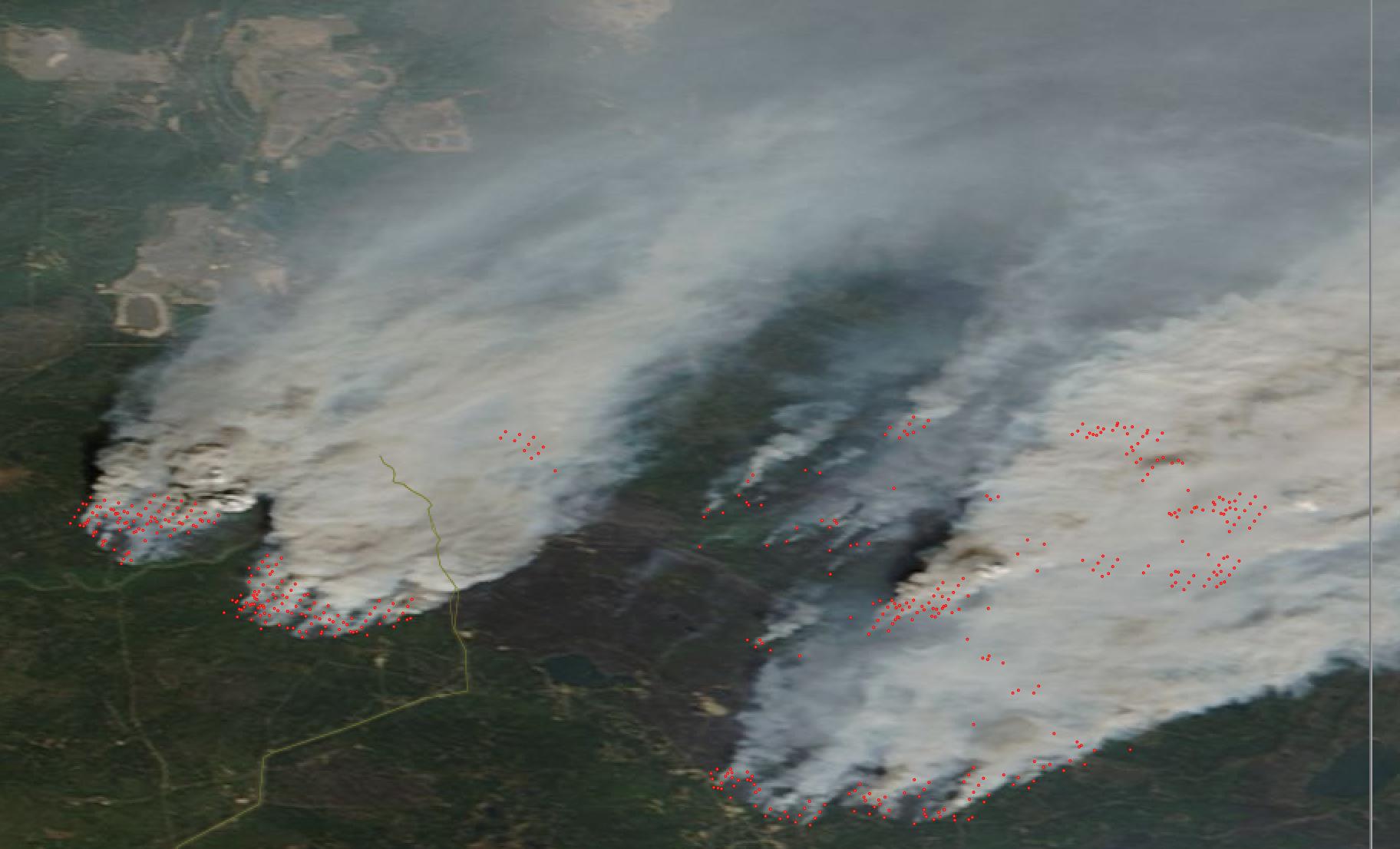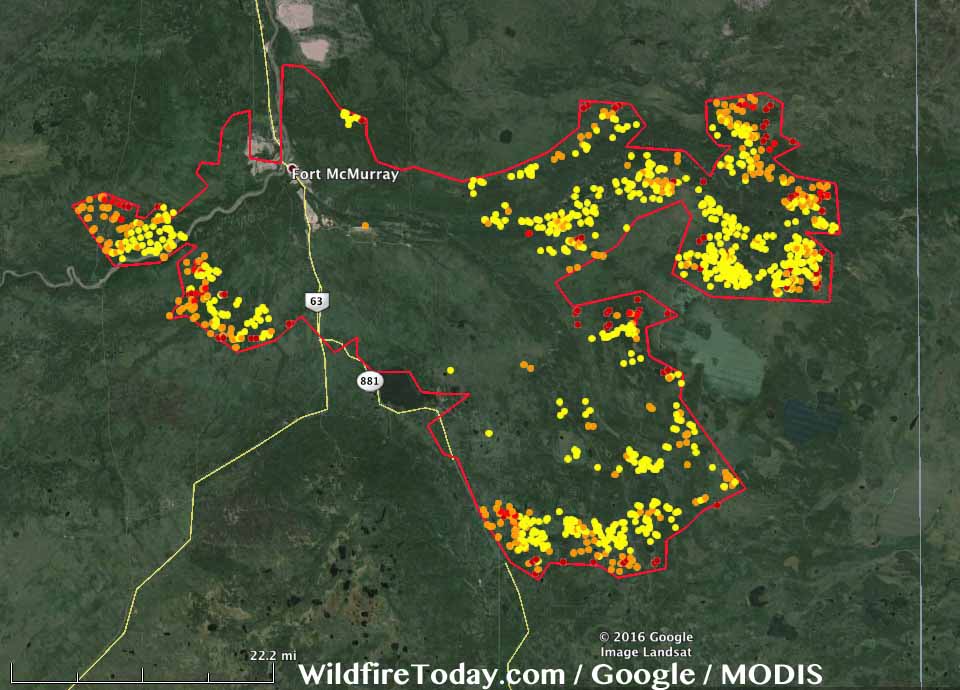Environment & Energy
Related: About this forumFt. Mac Fire 1,360 Square Miles In Extent; Workers' Camp Burns, 8,000 Tar Sands Workers Evacced
On Monday, strong southerly winds and freakishly hot temperatures near 80 degrees (F) combined to fan the still-raging Fort McMurray Fire in Alberta, Canada. The monstrous, climate change enhanced, blaze swelled. And by the end of the day it had expanded to cover more than 354,000 hectares, 1,360 square miles, or an area larger than the state of Rhode Island. In a little more than a week, a fire that emergency response personnel are calling ‘The Beast’ had once again doubled in size.
 ?w=900&h=546
?w=900&h=546
(The Fort McMurray Fire again exploded on Monday — invading tar sands facilities even as the eastern sections of the fire came to within 7 kilometers of the Saskatchewan border. Image source: LANCE MODIS.)
As the fire expanded, it swept north and east. Casting off choking, dense smoke, the fire spiked air quality ratings to 38 (a 10 is considered dangerous), forcing emergency response personnel, workers, and those few people now inhabiting the blackened town of Fort McMurray to wear particulate filtration masks. The bad air quality caused some officials to speculate that the return of more than 80,000 residents to the town could be delayed. The evacuees had been forced from their homes by the fires during early May — a wave of climate change refugees that have now faced a three week period of dislocation. But any thought of residents returning was swiftly overwhelmed by the rapidly-expanding fire itself.
As the town of Fort McMurray choked in the smoke of resurgent fires, walls of flame moving north and east again threatened tar sands facilities. Firefighters scrambled to widen fire breaks as fires moving as fast as 40 kilometers per hour leapt defensive lines and entered some of the industrial sections. Ironically-named Travis Fairweather, a wildfire information officer, described the completely untenable situation:
“Yesterday the fire was showing extreme behaviour and lots of smoke in the air. We had to pull the firefighters off the line because it was so dangerous out there.”
The entire industrial zone fell swiftly under threat and by late Monday more than 8,000 tar sands workers from a total of 19 camps had been ordered to evacuate. By Tuesday morning, the Blacksand Lodge — a temporary residence for oil workers manning tar sands facilities located 35 kilometers to the north of Fort McMurrary — had succumbed to the flames. A large facility, the Blacksand camp provided 665 residential units for workers. In total, it’s estimated that about 6,000 workers remain in tar sands facilities and emergency responders are coordinating to organize an air evacuation if necessary.
 ?w=900&h=647
?w=900&h=647
(Fort McMurray Fire extent with hotspots as of early Monday on May 16. The region affected by the fire as of this time was truly vast — stretching nearly 50 miles long and 30 miles wide. Through late Wednesday, the massive blaze is likely to again claim more ground. Image source: Wildfire Today.)
EDIT
https://robertscribbler.com/2016/05/17/the-beast-growls-warming-induced-wildfire-again-doubles-in-size-burns-tar-sands-workers-camp/